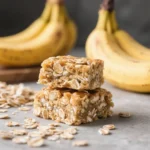Introduction
Margherita Pizza is more than just a dish—it’s a symbol of Italian culinary artistry, simplicity, and pride. Revered around the world for its fresh ingredients and vibrant colors that mirror the Italian flag, this classic pizza captures the essence of Naples, where it was born. With its foundation of tangy tomato sauce, creamy mozzarella cheese, fragrant basil, and a perfectly crisp yet chewy crust, Margherita Pizza is a timeless favorite among food lovers. Whether enjoyed in a rustic pizzeria in Italy or recreated at home, each bite offers a taste of tradition, culture, and the joy of eating well with minimal fuss.
The History
The story of Margherita Pizza dates back to 1889 in Naples, Italy, during a time when pizza was primarily a humble street food for the working class. Everything changed when Queen Margherita of Savoy, wife of King Umberto I, visited Naples and expressed curiosity about local cuisine. To honor her visit, renowned pizzaiolo Raffaele Esposito of Pizzeria Brandi crafted three different pizzas, one of which featured tomatoes, mozzarella cheese, and fresh basil—colors that mirrored the newly established Italian flag: red, white, and green. The Queen loved this particular creation so much that she sent a letter of appreciation, and the pizza was subsequently named in her honor: Pizza Margherita.
This moment marked a turning point in Italian gastronomy. What began as a simple meal for the poor became a national treasure and later a global sensation. Over time, Neapolitan pizza-making evolved into an artisanal craft, eventually earning UNESCO Intangible Cultural Heritage status in 2017. Today, authentic Margherita Pizza is protected by strict guidelines set by the Associazione Verace Pizza Napoletana (AVPN), ensuring that only pizzas made with specific ingredients and methods can bear the true name of “Pizza Margherita.”
Ingredients Breakdown
The beauty of Margherita Pizza lies in its simplicity—each ingredient must be high-quality and fresh to shine on their own. Here’s a detailed look at what goes into an authentic version:
- 00 Flour: Also known as doppio zero flour, this finely milled Italian wheat flour is essential for achieving a soft, elastic dough with a delicate chew. Its low protein content allows for easier digestion and optimal fermentation.
- San Marzano Tomatoes: Grown in the volcanic soil near Mount Vesuvius, these plum tomatoes are sweet, low in acidity, and rich in flavor. Canned San Marzanos (DOP-certified) are preferred for their consistency and authenticity.
- Fior di Latte or Mozzarella di Bufala: Traditional recipes call for either fior di latte (cow’s milk mozzarella) for a milder taste or mozzarella di bufala (buffalo mozzarella) for a richer, creamier profile. Both should be fresh, moist, and torn by hand rather than sliced.
- Fresh Basil Leaves: Added after baking or in the final moments, fresh basil provides a bright, aromatic note that complements the sweetness of the tomatoes and richness of the cheese.
- Extra Virgin Olive Oil: A drizzle of high-quality olive oil adds depth and gloss to the finished pizza. Look for cold-pressed, unfiltered oils with a grassy or peppery finish.
- Sea Salt: Enhances the flavor of the dough and balances the natural sweetness of the tomatoes.
- Filtered Water: Used to hydrate the dough; room temperature water helps activate the yeast properly.
- Fresh Yeast or Active Dry Yeast: Responsible for leavening the dough, giving it airiness and structure. Fresh yeast is traditional, but active dry or instant yeast works well too.
Every ingredient plays a vital role, and substitutions can alter the character of the pizza significantly. Authenticity demands respect for origin and quality.
Step-by-Step Recipe
Ingredients (for two 11–12 inch pizzas)
- 500g (3 ¾ cups) tipo “00” flour
- 325ml (1 ⅓ cups) filtered water, at room temperature
- 7g (2 tsp) active dry yeast or 20g fresh yeast
- 10g (2 tsp) fine sea salt
- 1 tbsp extra virgin olive oil (plus more for drizzling)
- 200g (¾ cup) crushed San Marzano tomatoes (preferably DOP certified)
- 200g fresh mozzarella (fior di latte or mozzarella di bufala), drained and torn
- 6–8 fresh basil leaves
- Pinch of dried oregano (optional)
- Flour for dusting (00 or semolina)
Directions
- Activate the Yeast: In a small bowl, dissolve the yeast in half of the water. Let sit for 5–10 minutes until foamy (if using instant yeast, skip this step and mix directly with flour).
- Mix the Dough: In a large mixing bowl, combine the 00 flour and salt. Add the activated yeast mixture and remaining water. Mix with a wooden spoon or your hands until a shaggy dough forms.
- Knead the Dough: Turn the dough onto a lightly floured surface and knead for 8–10 minutes until smooth and elastic. Alternatively, use a stand mixer with a dough hook on medium speed for 6–8 minutes.
- First Rise (Bulk Fermentation): Place the dough in a lightly oiled bowl, cover with a damp cloth or plastic wrap, and let rise at room temperature (around 70°F/21°C) for 1–2 hours, or until doubled in size.
- Divide and Shape: Punch down the dough and divide into two equal portions. Round them into tight balls, tucking the edges underneath.
- Second Rise (Proofing): Place each dough ball in a separate container dusted with semolina or flour, cover, and let proof for 4–8 hours at room temperature (or up to 24 hours in the refrigerator for enhanced flavor development).
- Prepare Toppings: Drain the mozzarella from excess liquid by placing it on a paper towel-lined plate. Crush the San Marzano tomatoes with your hands or blend briefly, then season lightly with salt (no added sugar or herbs).
- Preheat Oven and Surface: Place a pizza stone or steel in your oven and preheat to the highest possible temperature (ideally 475°F–500°F / 245°C–260°C) for at least 45 minutes. If using a wood-fired oven, aim for 800°F (425°C).
- Shape the Dough: On a lightly floured surface, gently stretch one dough ball by hand or with a rolling pin into a 11–12 inch round. Avoid using a rolling pin if you want airy cornicione (edge). Transfer to a pizza peel generously dusted with cornmeal or semolina.
- Add Toppings: Spread a thin layer of tomato sauce (about ¼–⅓ cup) over the dough, leaving a ½-inch border. Distribute torn mozzarella evenly. Tear basil leaves and scatter a few on top (reserve some for after baking).
- Bake the Pizza: Slide the pizza onto the hot stone. Bake for 8–12 minutes (depending on oven heat) until the crust is puffed, charred in spots, and golden brown.
- Finish and Serve: Remove from oven, drizzle with extra virgin olive oil, add remaining fresh basil, and optionally sprinkle with a pinch of sea salt. Slice and serve immediately.
Tips
- Dough Hydration: Aim for 60–65% hydration (water-to-flour ratio). Higher hydration yields a softer, airier crumb but requires more skill to handle.
- Long Fermentation: Cold fermenting the dough in the fridge for 24–48 hours enhances flavor complexity and digestibility.
- Drain the Cheese: Excess moisture from mozzarella can make the pizza soggy. Always drain it for at least 30 minutes before use.
- Use Quality Tomatoes: Avoid tomato sauces with additives. Hand-crush San Marzanos and use as-is—no cooking required.
- Don’t Overload: Margherita is minimalist. Too many toppings will weigh down the crust and prevent proper cooking.
- Oven Temperature: The hotter, the better. Home ovens may not reach professional temperatures, so preheating thoroughly and using a baking steel helps mimic a wood-fired oven.
- Rotate the Pizza: Halfway through baking, rotate the pizza for even browning, especially in home ovens with hot spots.
- Wood-Fired Flavor: For a smoky touch, consider using a portable pizza oven like Ooni or Roccbox.
Variations and Customizations
While traditional Margherita remains sacred, creative variations allow for personal expression without straying too far from its roots:
- Spicy Margherita: Add thinly sliced fresh chilies or a drizzle of chili oil before serving.
- Garlic Infusion: Rub the baked crust edge with a raw garlic clove for subtle aroma.
- Tomato Varieties
- Cheese Blends: Mix mozzarella with a touch of provolone, burrata, or smoked scamorza for complexity.
- Gluten-Free Option: Use a gluten-free 00-style blend, though texture and rise will differ.
- Vegan Margherita: Substitute with plant-based mozzarella (cashew or almond-based), vegan basil oil, and ensure yeast is vegan-friendly.
- White Margherita (Pizza Bianca): Skip the tomatoes and top with ricotta, mozzarella, olive oil, and basil.
- Seafood Twist: After baking, add fresh cherry tomatoes, capers, and anchovies for a coastal variation.
: Try heirloom tomato purée or sun-dried tomato paste for deeper flavor (sparingly).
Note: While experimenting is fun, purists argue that any deviation disqualifies it from being a true “Margherita.”
Health Considerations and Nutritional Value
A typical slice (1/8th of a 12-inch Margherita Pizza) contains approximately:
- Calories: 220–260 kcal
- Carbohydrates: 30–35g (mainly from refined flour)
- Protein: 10–12g (from cheese and wheat)
- Fat: 8–10g (mostly unsaturated from olive oil and cheese)
- Sodium: 400–600mg (can vary based on cheese and added salt)
- Fiber: 2–3g (low due to white flour; whole grain alternatives increase fiber)
Health Notes:
- Refined Carbs: Traditional 00 flour has a high glycemic index. Those managing blood sugar may opt for whole wheat or ancient grain blends.
- Lactose Content: Fresh mozzarella contains lactose; lactose-intolerant individuals may need alternatives.
- Sodium Awareness: Store-bought mozzarella and canned tomatoes can be high in sodium. Choose low-sodium versions when possible.
- Healthy Fats: Extra virgin olive oil contributes heart-healthy monounsaturated fats and antioxidants.
- Antioxidants: Tomatoes provide lycopene (enhanced by cooking), and basil offers anti-inflammatory compounds.
- Balanced Meal: Pair pizza with a side salad, steamed vegetables, or legumes to improve nutritional balance.
Enjoyed in moderation, Margherita Pizza can fit into a balanced diet, especially when made with mindful ingredient choices.
FAQ
What makes a pizza “authentic” Margherita?
According to the AVPN, authentic Pizza Margherita must use only San Marzano tomatoes, fior di latte or mozzarella di bufala, fresh basil, extra virgin olive oil, sea salt, and 00 flour, prepared by hand and baked in a wood-fired oven at high heat.
Can I make Margherita Pizza without a pizza stone?
Yes. Use a heavy-duty baking sheet, cast iron skillet, or upside-down baking tray preheated in the oven. A steel plate also works well for better heat retention.
Why is my pizza crust soggy?
Common causes include too much sauce, undrained cheese, insufficient oven heat, or overloading toppings. Ensure all wet ingredients are well-drained and your oven is fully preheated.
Can I freeze the dough?
Yes. After portioning, wrap dough balls tightly in plastic and freeze for up to 3 months. Thaw in the refrigerator overnight, then bring to room temperature before shaping.
Is Margherita Pizza vegetarian?
Yes, traditionally it is vegetarian. However, check cheese labels—some mozzarellas use animal rennet, making them non-vegetarian.
How long should I ferment the dough?
Minimum 8 hours at room temperature or 24–48 hours in the refrigerator. Longer fermentation improves flavor, texture, and digestibility.
Can I use regular yeast instead of fresh?
Absolutely. Substitute 7g active dry yeast or 5g instant yeast for every 20g fresh yeast. Adjust rising times accordingly.
Summary
Margherita Pizza is a masterpiece of simplicity, born in Naples and beloved worldwide for its fresh, vibrant flavors and cultural significance. Made with just a few premium ingredients, it represents the heart of Italian cuisine—where quality, tradition, and passion come together in every bite.










